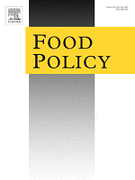Achieving food security: Focusing on the process to coordinate instruments
February 01, 2011


.jpg)
.jpg)

Gashaw A., Bernard T., de Janvry A., Sadoulet E., Trachtman C. (2021) Introducing quality certification in staple food markets in Sub-Saharan Africa: Four Conditions for Successful Implementation. Food Policy, vol. 105, p 102173.